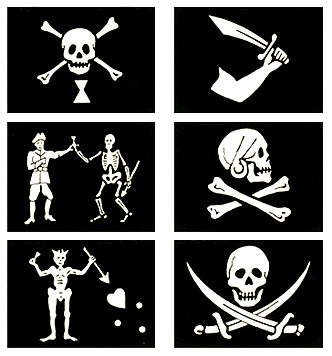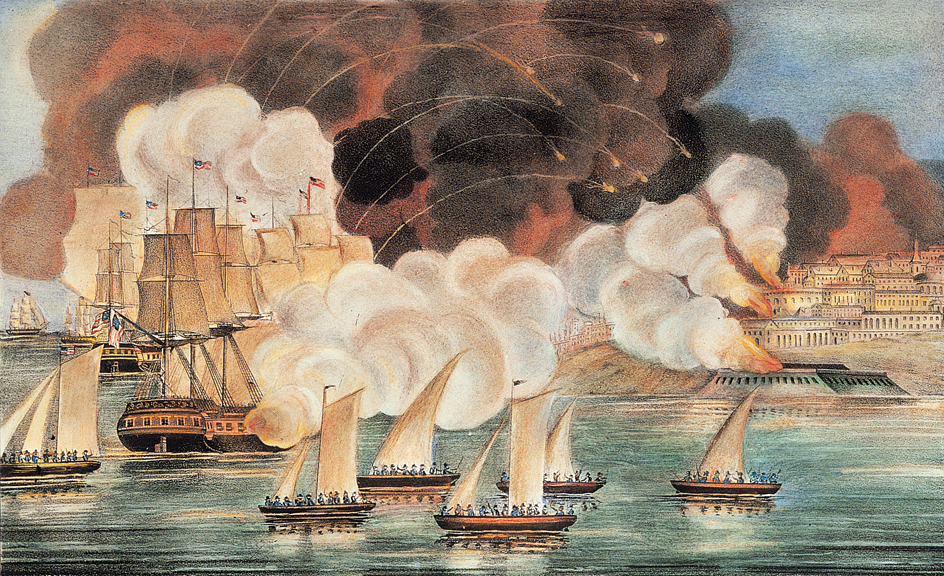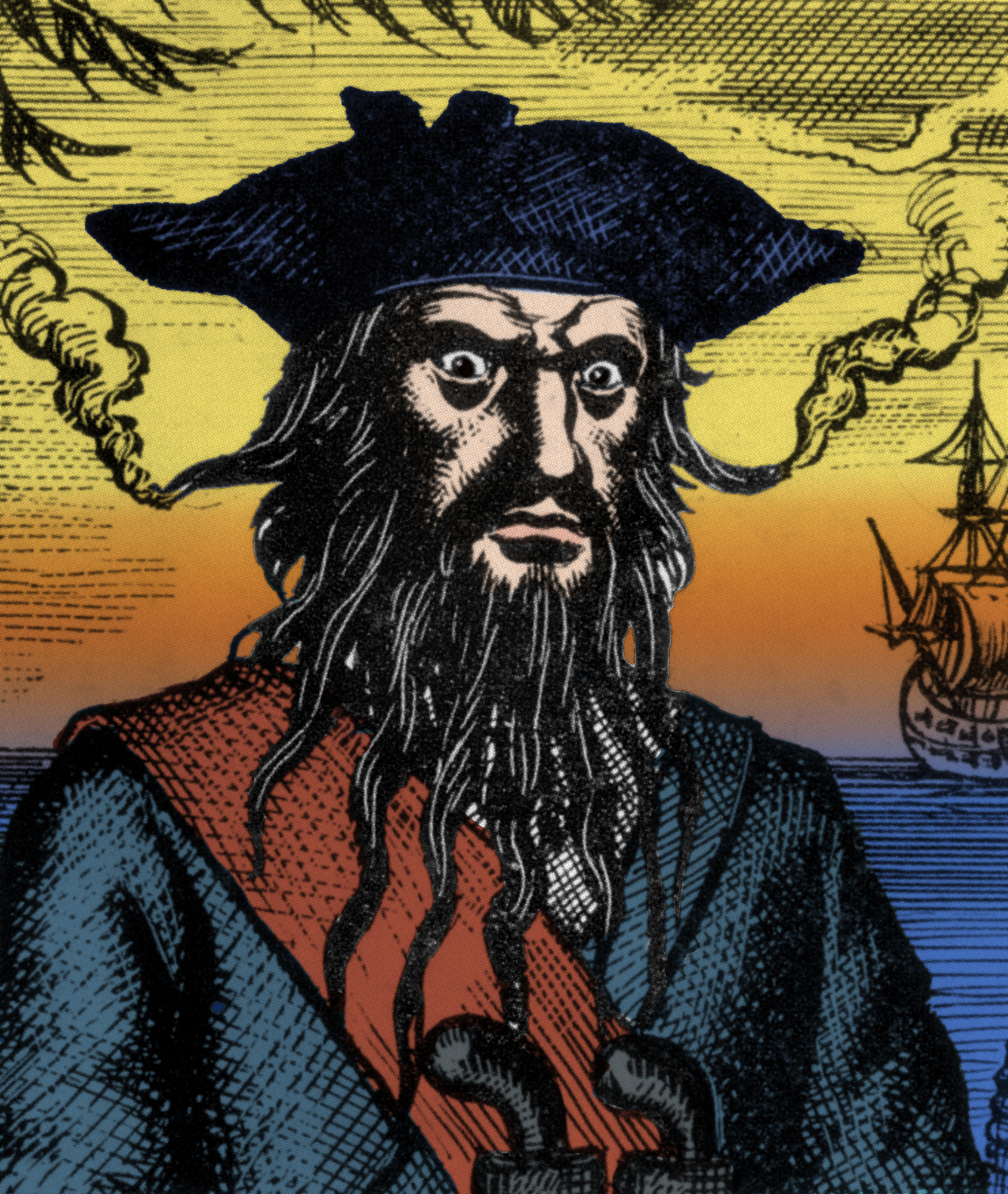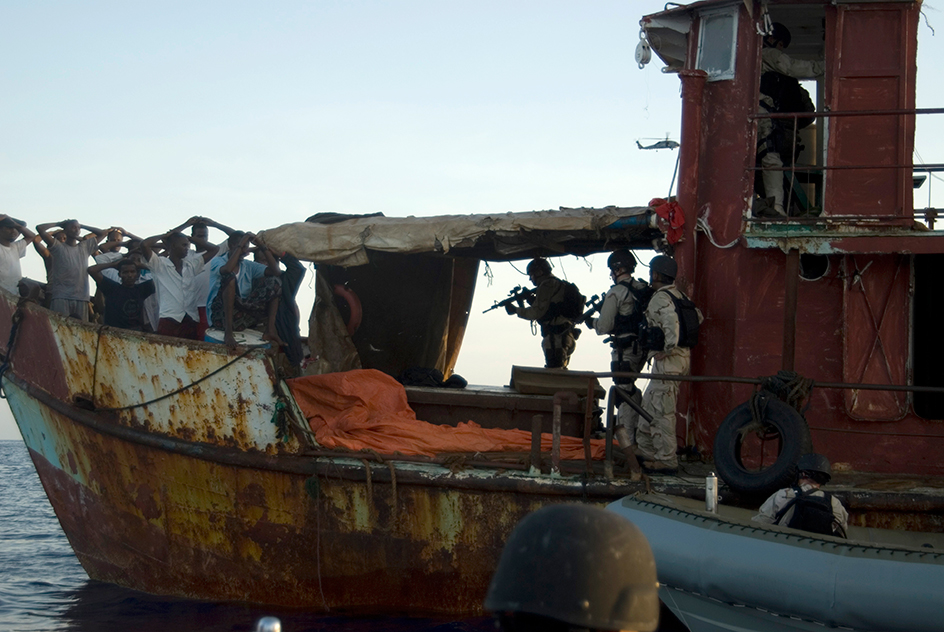Pirate is a person who attacks and robs ships at sea. Such robbers also have been commonly called buccaneers, corsairs, freebooters, and sea rovers. Pirates differ from sea raiders known as privateers. Historically, pirates preyed upon any vessel they encountered. Privateers, however, were licensed by a particular nation during wartime to attack enemy ships. Privateers generally were not considered pirates, but the difference between the two was often a matter of perspective.
Pirates have existed for as long as people have sailed the seas. The best-known period of pirate attacks, called the Golden Age of Piracy, occurred from the late 1600’s through the early 1700’s on the Caribbean Sea and Indian Ocean. Though practically eliminated in the developed world, piracy still exists where governments are too weak to prevent it. This article deals mostly with piracy before the mid-1800’s.
A pirate’s life.
People became pirates for various reasons. Sometimes, the harsh conditions of life at sea led otherwise honest seamen to turn to piracy. Others sought riches or adventure. Many privateers, unwilling to give up a profitable pursuit, became pirates when wars between nations ended.
Legend, fictional literature, and motion pictures have helped create an exciting, romantic image of pirates. In particular, the novel Treasure Island (1883) and the play Peter Pan (1904) have shaped the popular image of a pirate. A pirate commonly is represented as a fierce-looking man with an eye patch or peg leg. This description, though perhaps not far from the truth, probably also applied to honest sailors.
Though often represented as carefree and jolly, most pirates probably led miserable lives. They spent their loot as fast as they stole it and often were drunk and quarrelsome. Lacking good hygiene or medical care, many pirates died of wounds or diseases. Some were shot or marooned by their own crews or captured and sentenced to death by authorities.
Most successful pirate crews developed rules and regulations to govern their ships. Members elected a captain and other officers and had a code of punishment for breaking agreements. They also developed pay scales to decide on each person’s share of the booty (stolen goods) and payment for battle wounds.
Initially, pirate ships flew a red banner called the Bloody Flag or Jolie Rouge (Pretty Red), which signified that no mercy would be shown in battle. They then began using flags that emphasized the unhappy fate their victims could expect. These flags featured such images as skeletons and flaming swords. The most popular pirate flags showed a white skull and crossbones on a black background. This symbol became popularly known as the Jolly Roger.

Many merchant ships were lightly armed to defend against attack. Most pirate ships, however, had numerous cannons and a large crew, and could defeat merchant sailors in hand-to-hand combat. Pirates aimed to so frighten the captain of a merchant ship that he would surrender without a fight. This strategy spared the pirate crew from harm and the prize cargo from damage.
Besides robbing ships, pirates also attacked towns. They blockaded port towns and held them for ransom. It was important for the pirates to get their loot and leave before naval vessels learned of their presence. Spain built stone forts throughout the Caribbean to prevent pirates from plundering its colonial settlements.
The Mediterranean.
As civilizations arose along the Mediterranean Sea, so did piracy. Egyptian records mention pirate attacks as early as the 1300’s B.C. Ancient Greek, Phoenician, and Carthaginian trading ships all were plagued by pirates. In 67 B.C., Roman forces under Pompey the Great began a campaign that rid the area of pirates for centuries.
The fall of the West Roman Empire in A.D. 476 made it possible for piracy to reemerge in the Mediterranean. As new nations developed in this region, their governments licensed pirates as privateers. Muslim privateers from the Barbary States, which lay on Africa’s north coast, roamed the Mediterranean attacking the ships of Christian European nations. These privateers, sometimes called Barbary corsairs or Barbary pirates, had bases in Algiers, Morocco, Tunis, and Tripoli. Most established nations had largely defeated the corsairs by the early 1800’s. But raids continued until French forces seized the Barbary pirates’ last base, in Algiers, in 1830.

The Caribbean.
In the 1500’s, the lure of the vast treasure being shipped from America to Spain focused the attention of other European countries on the Caribbean. These countries’ agents robbed Spain’s ships and looted its settlements. Spain called them pirates, but privateers is probably a better term, because they were backed by national governments. Among these robbers were the “sea dogs” sent by Queen Elizabeth I of England to raid Spanish fleets. They included such famous English captains as Sir Francis Drake and Sir John Hawkins.
During the early 1600’s, French sailors settled on Hispaniola and on the nearby Île de la Tortue (also called Tortuga Island). They hunted wild cattle and smoked the meat on grills called boucans. Later, they began raiding passing ships. These boucaniers soon became known as buccaneers. Their numbers grew, eventually including Dutch, English, and Portuguese pirates, and their main base shifted to Jamaica. During the late 1600’s, no town was safe along the Spanish Main, an area that included the coasts of present-day Colombia and Venezuela.
In 1671, the famous English buccaneer Henry Morgan led 2,000 other buccaneers in the looting and destruction of Panama City, Panama, then a Spanish territory. In 1674, after England had made peace with Spain, Morgan became lieutenant governor of Jamaica. Many privateers formerly in England’s service turned to piracy. Though piracy was not eliminated, stronger governments in the Caribbean region led some pirates to look elsewhere for easy prey.
Other regions.
During the late 1600’s, pirates sailed to waters near the slave-trading stations of west Africa. Reports of great wealth lured others to the Indian Ocean. Once there, they ambushed ships that carried rich cargoes of silks, spices, jewels, and ivory. Many of these pirates formed new bases on Madagascar and other nearby islands east of the African mainland. Perhaps the best known of these pirates was the Scotsman William Kidd. England’s government had sent Kidd to capture pirates, but instead he became one himself.
European pirates also turned their attention to North America. By 1700, the English had established successful trade routes between North America and Europe. Some pirates set up a base at New Providence, the Bahamas, and attacked ships that followed these routes. The pirates’ leaders included the Englishmen Benjamin Hornigold, “Calico Jack” Rackham, and Charles Vane. Pirates who sailed with these men included Anne Bonny, an Irish woman, and Mary Read, probably from England. The most notorious pirate of this time was the English pirate Blackbeard, also known as Edward Teach. Blackbeard terrorized the Carolina and Virginia coasts in 1717 and 1718, when he was killed battling a naval vessel. By the late 1720’s, the British Royal Navy had stopped most attacks by European pirates. 
Starting in the early 1600’s, pirates from Asia attacked European and other trading ships in Asian waters. In the mid-1800’s, however, the British and other navies cleared the seas of most pirates, including those from Asia.
Today, political instability in such areas as the South Pacific, east Africa, and South America have resulted in a new era of piracy. During the early 2000’s, pirates based in Somalia attacked many ships traveling in the Gulf of Aden and the Indian Ocean. Poverty and the lack of an effective central government in Somalia contributed to the problem. 
